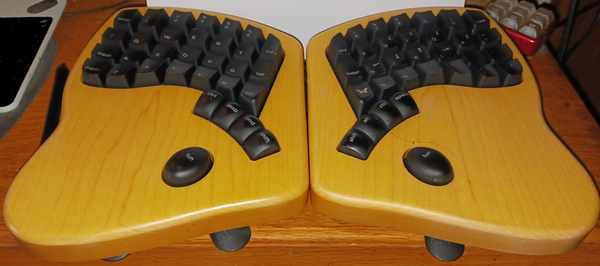A Graphical Interface for Customizing Keyboard Layouts
Keyboardio: Waiting for Chrysalis

© Photo by Joshua J. Cotten on Unsplash
How is the popular keyboard manufacturer's graphical installer after nine years in development?
Keyboardio is a family company made possible by the maturation of open hardware. Since 2017, it has been selling mechanical keyboards that quickly found a high-end niche market among keyboard enthusiasts, including me. However, for even longer, it has been working to develop Chrysalis, a graphical interface for customizing keyboard layouts. When I recently bought a Model 100, Keyboardio's latest flagship product, I assumed that by this time Chrysalis would be fully operational after nine years. Instead, here is what I found.
My expectations were high, given the careful attention Keyboardio pays to other aspects of its business. As a customer from Keyboardio's first fundraiser, I have long been impressed by the company's quick support and its interaction on its community forum. Physically, too, Keyboardio's products have had considerable thought put into them, and are so ergonomically advanced that I can type up to 10 hours a day without any strain on its Model 01 and Model 100 products (Figure 1). Both are minimalist boards of 66 keys divided into halves, each of which is designed to minimize finger movement. In addition, the halves can be placed as close or as far apart as desired, and, by adjusting their stands, slanted to almost any angle. Moreover, with the keys mounted on slabs of maple or walnut, these two boards have an unparalleled elegance in a field dominated by functional concerns. The Keyboardio Atreus is less aesthetic, but is equally well-designed for its role as a portable keyboard for laptops with full-sized keys.
 Figure 1: Keyboardio's flagship product, the Model 100. It replaces the Model 01. Both keyboards look similar.
Figure 1: Keyboardio's flagship product, the Model 100. It replaces the Model 01. Both keyboards look similar.
[...]
Buy Linux Magazine
Subscribe to our Linux Newsletters
Find Linux and Open Source Jobs
Subscribe to our ADMIN Newsletters
Support Our Work
Linux Magazine content is made possible with support from readers like you. Please consider contributing when you’ve found an article to be beneficial.

News
-
Zorin OS 18 Hits over a Million Downloads
If you doubt Linux isn't gaining popularity, you only have to look at Zorin OS's download numbers.
-
TUXEDO Computers Scraps Snapdragon X1E-Based Laptop
Due to issues with a Snapdragon CPU, TUXEDO Computers has cancelled its plans to release a laptop based on this elite hardware.
-
Debian Unleashes Debian Libre Live
Debian Libre Live keeps your machine free of proprietary software.
-
Valve Announces Pending Release of Steam Machine
Shout it to the heavens: Steam Machine, powered by Linux, is set to arrive in 2026.
-
Happy Birthday, ADMIN Magazine!
ADMIN is celebrating its 15th anniversary with issue #90.
-
Another Linux Malware Discovered
Russian hackers use Hyper-V to hide malware within Linux virtual machines.
-
TUXEDO Computers Announces a New InfinityBook
TUXEDO Computers is at it again with a new InfinityBook that will meet your professional and gaming needs.
-
SUSE Dives into the Agentic AI Pool
SUSE becomes the first open source company to adopt agentic AI with SUSE Enterprise Linux 16.
-
Linux Now Runs Most Windows Games
The latest data shows that nearly 90 percent of Windows games can be played on Linux.
-
Fedora 43 Has Finally Landed
The Fedora Linux developers have announced their latest release, Fedora 43.

